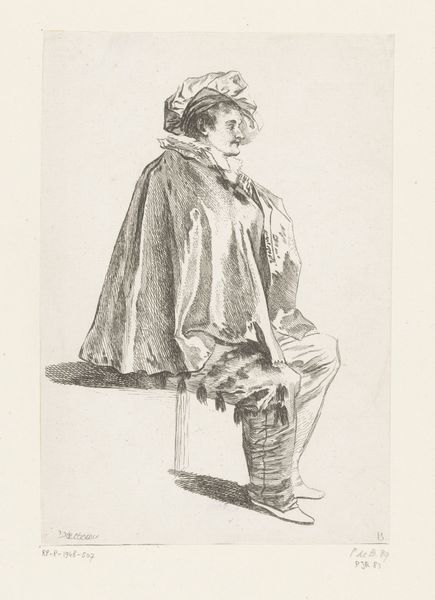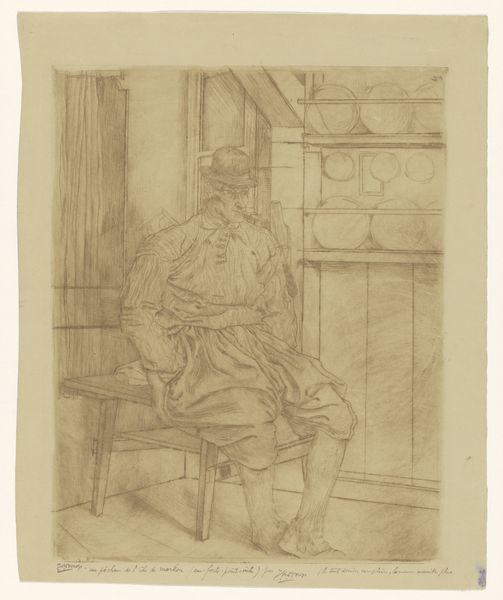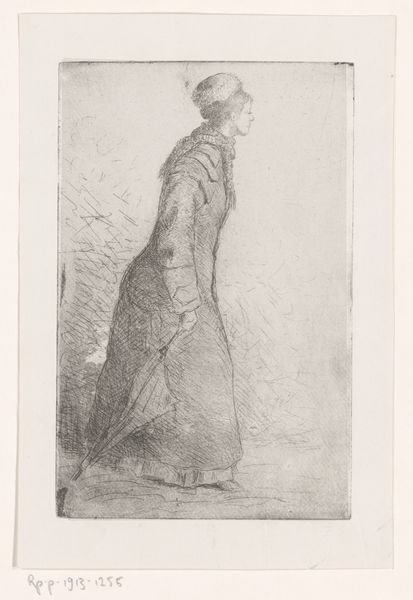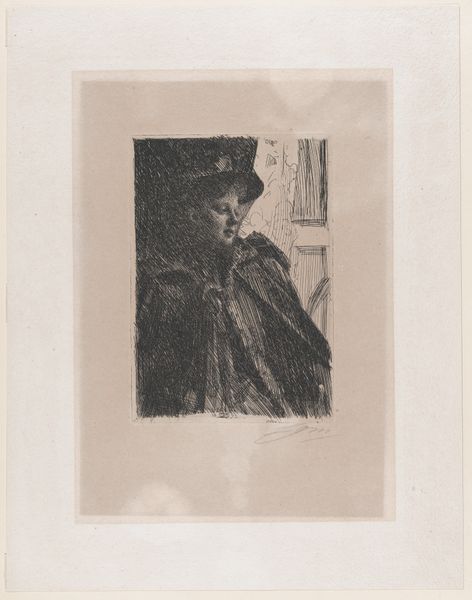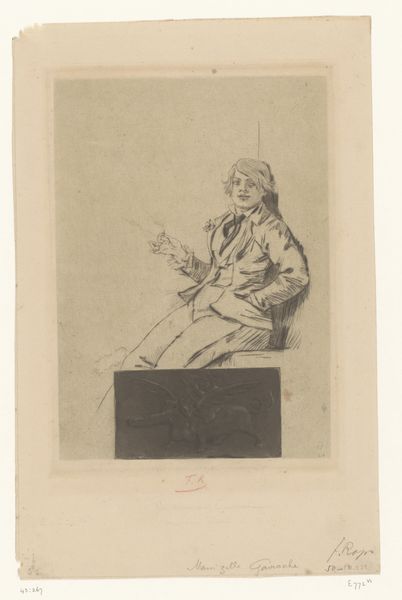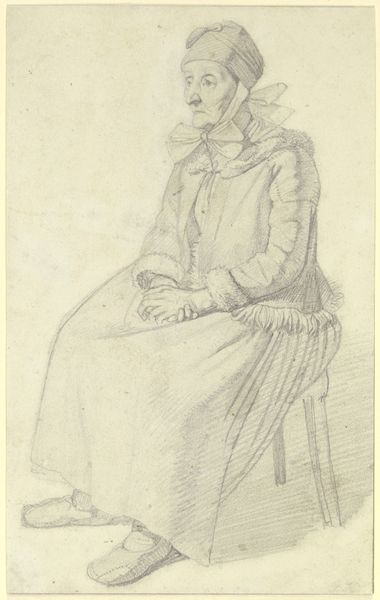
print, etching
#
portrait
# print
#
etching
#
etching
#
realism
Dimensions: 179 mm (height) x 132 mm (width) (plademaal)
Editor: So, this is "Dameportræt," or "Lady's Portrait," an etching from 1881 by Carl Bloch. The fine lines give the woman such a delicate, almost fragile appearance. How do you read this piece? Curator: Well, given the historical context, it's vital to consider the role of portraiture within 19th-century Danish society. Etchings like these democratized image production. Think about how access to visual representations shifted during this period. Did it challenge older, more hierarchical models of art patronage and artistic representation? Editor: I suppose having etchings available would have opened things up a bit? But still, wouldn't the sitter need some standing to be considered worthy of a portrait? Curator: Exactly. Who gets represented, and why? Consider the sitter's dress – is it suggesting any messages about wealth or position? And what does her posture imply about her role within the home, within society? Notice how the tight frame keeps it intimate. Editor: You’re right. There's an ambiguity about her social standing; she doesn’t appear wealthy. What kind of audience do you think Bloch was targeting with prints like these? Were they for public consumption or something more exclusive? Curator: That’s the critical question, isn't it? Realism was in vogue, and artists made a point of portraying ‘regular’ people, so who would buy this, and what political meanings can this transmit? How do images like this negotiate between ideas of individual likeness and broader societal types, particularly considering questions of gender and class? These etchings were probably not displayed as widely. Editor: So it's a layered commentary. The medium seems at odds with the subject matter, raising more questions about social structure than the woman’s likeness itself. Fascinating. Curator: Indeed. By examining the art through the lens of its social context, we uncover these complicated narratives about art, patronage, and identity. We are forced to rethink the way we engage with art. Editor: This reframed my way of appreciating etchings like these, focusing on who they represent rather than just how they look! Thank you.
Comments
No comments
Be the first to comment and join the conversation on the ultimate creative platform.





